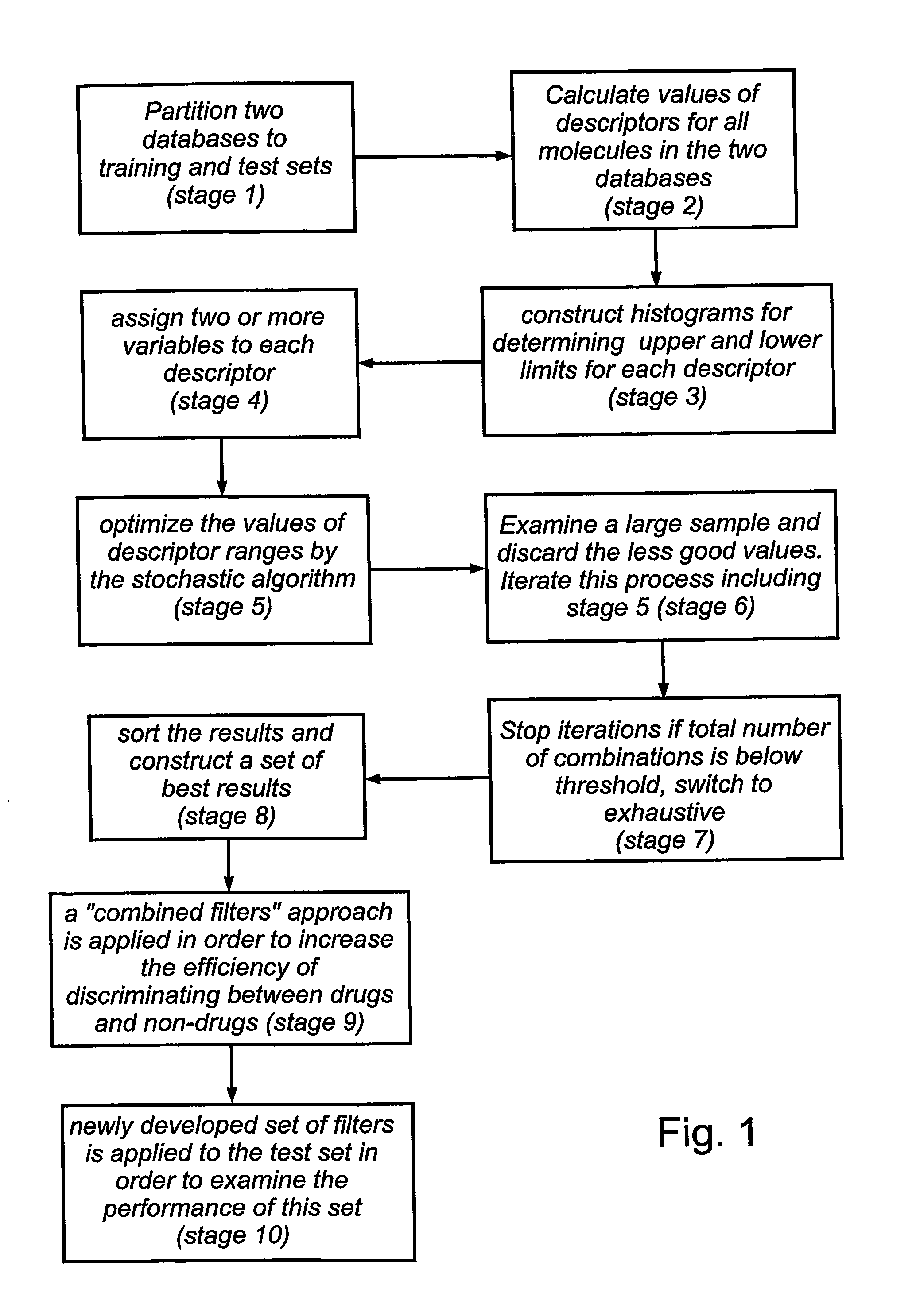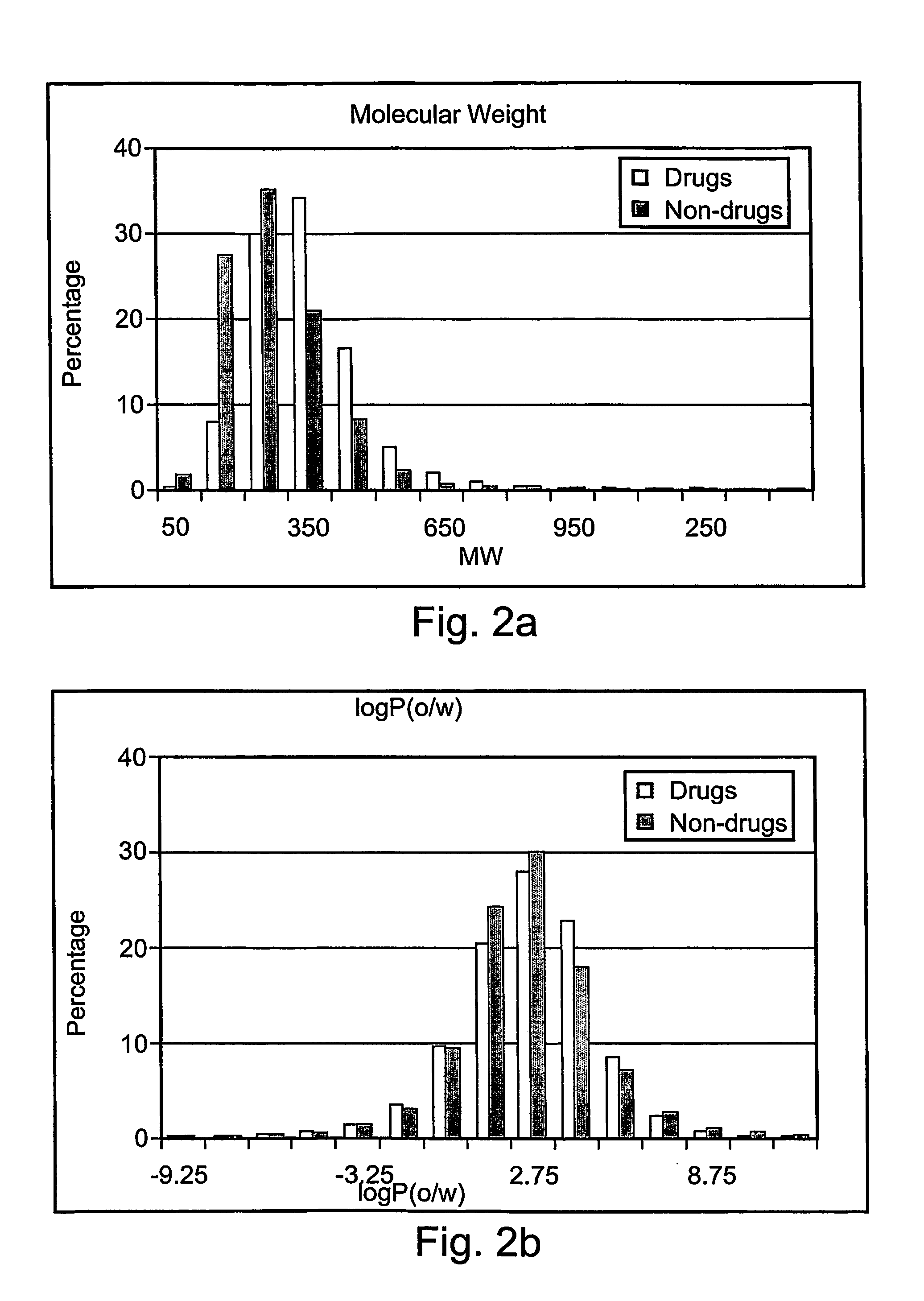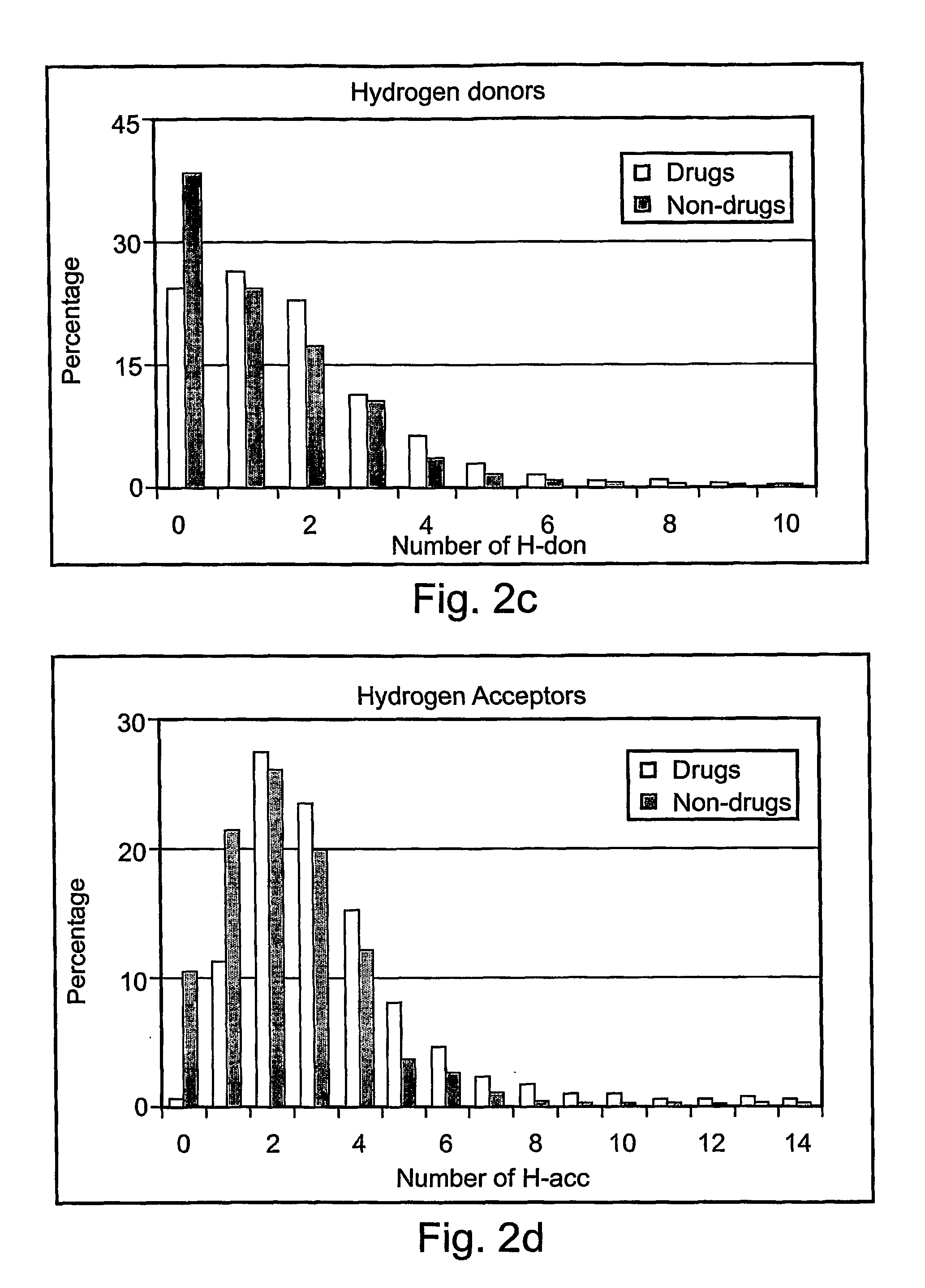Stochastic method to determine, in silico, the drug like character of molecules
a technology of molecule and drug like character, applied in the field of new drug detection, drug development and drug design, can solve the problems of no reasonable prioritization of molecules that determine, background art does not teach or suggest a method, etc., and achieve the effect of saving time and money, improving the chances of drug discovery, and enhancing predictive power
- Summary
- Abstract
- Description
- Claims
- Application Information
AI Technical Summary
Benefits of technology
Problems solved by technology
Method used
Image
Examples
example 1
Methods for Determining the DLI
[0085] As previously described, the present invention includes a method for determining a DLI (drug like index) for prioritizing molecules according to their drug like properties. This Example describes illustrative, non-limiting methods according to the present invention for determining the DLI. It should be noted that these methods are preferably used statistically, to determine the differential DLI for partitioning or clustering a plurality of molecules. The minimum / maximum and optimum numbers are determined statistically, depending upon such factors as the size of the database and the characteristics (drug-like vs. non drug-like) of the molecules in the database. For example, as the database is larger, the higher is the chance to obtain drug-like molecules among the best fraction of molecules.
Methods
[0086] The stochastic algorithm for distinguishing between drugs and non-drugs according to the present invention presents a new approach to this ...
example 2
[0118] Stochastic Selection of Best Sets of Descriptors
[0119] This Example describes three different exemplary, illustrative versions of methods for selecting the best sets of descriptors. The first method preferably features two stages, a first stage to select the best sets of descriptors and a second stage to select the best ranges. In the second method, preferably both aspects of the variables are optimized simultaneously. The third method is faster than the two others, and is based on iterative elimination of descriptors (FIG. 3C).
[0120] In the first method (shown with regard to FIG. 3A), stage 1 is used for selection of best sets of descriptors (with a predefined range for each descriptor, which is determined in a prior examination of many alternative ranges for a single descriptor and testing the ability of each range to act as a “filter” that would distinguish drugs from non-drugs, as judged by the cost function, the MCC, of equation 1) while in the second stage ranges of s...
example 3
Methods for Prioritizing Molecules for High Throughput Screening
[0146] According to an illustrative, non-limiting application of the method of the present invention, the DLI may be used for prioritizing molecules in large datasets of molecules for High Throughput Screening (HTS). In general, pharmaceutical companies test large databases of molecules composed of hundreds of thousands of compounds against certain biological target seeking hits or leads. These large databases are sometimes purchased from companies that specialize in constructing libraries of chemicals that have biological properties (which may be called “drug like molecules”). An example of such company is Timtec Inc. (http: / / www.timtec.net / products / targeted_libraries.htm) or AsiNex (http: / / www.asinex.com / ) and there are many others. The purchased libraries of compounds are applied by robots to hundreds of thousands of wells on several types of “chips”, as an example of an illustrative type of biological, in vitro as...
PUM
| Property | Measurement | Unit |
|---|---|---|
| concentration | aaaaa | aaaaa |
| water solubility | aaaaa | aaaaa |
| lipophilicity | aaaaa | aaaaa |
Abstract
Description
Claims
Application Information
 Login to View More
Login to View More - R&D
- Intellectual Property
- Life Sciences
- Materials
- Tech Scout
- Unparalleled Data Quality
- Higher Quality Content
- 60% Fewer Hallucinations
Browse by: Latest US Patents, China's latest patents, Technical Efficacy Thesaurus, Application Domain, Technology Topic, Popular Technical Reports.
© 2025 PatSnap. All rights reserved.Legal|Privacy policy|Modern Slavery Act Transparency Statement|Sitemap|About US| Contact US: help@patsnap.com



